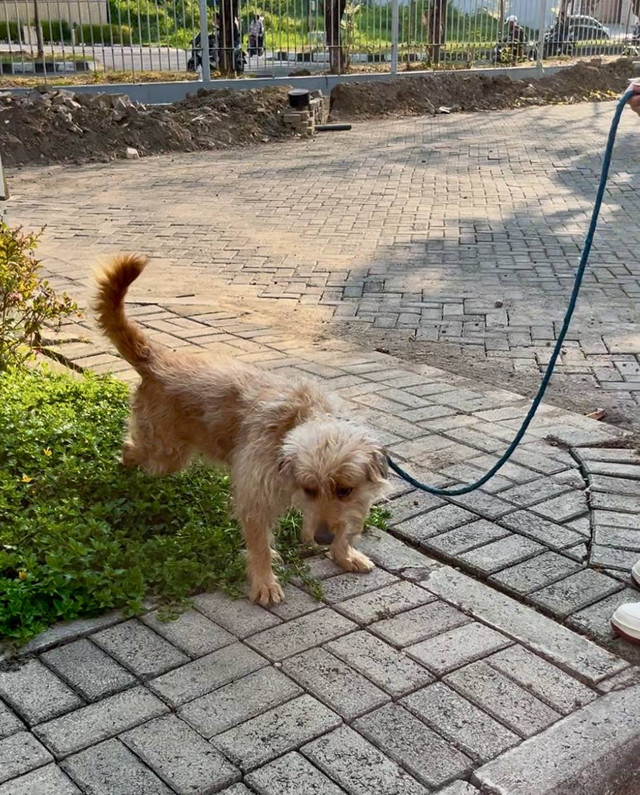Tentang KamiPedoman Media SiberKetentuan & Kebijakan PrivasiPanduan KomunitasPeringkat PenulisCara Menulis di kumparanInformasi Kerja SamaBantuanIklanKarir
2025 © PT Dynamo Media Network
Version 1.102.2
Konten dari Pengguna
Behind the Scenes at a Vet Hospital: Emotional Connections and Silent Bonds
9 Desember 2024 14:52 WIB
·
waktu baca 5 menitTulisan dari Yow Yan Xin tidak mewakili pandangan dari redaksi kumparan
ADVERTISEMENT
On November 6, 2024, I visited a veterinary hospital as a field trip to observe how communication is applied in healthcare. Stepping into the hospital, I noticed that communication wasn’t just about words. It was about tone of voice, the way people moved, and even the unspoken signals exchanged between professionals and the animals they cared for. Throughout the day, I witnessed moments of empathy, collaboration, and connection that demonstrated how vital communication is in veterinary practice.
ADVERTISEMENT
One of the most memorable sights was watching the interns interact with a three-legged dog, named Coklat, a permanent resident of the hospital. This dog, once involved in a life-changing accident, had been surrendered by its owner and now relied on the hospital staff for care. During a routine walk, the interns used soft, encouraging tones to guide the dog, saying things like, “Let’s go, buddy,” or “Good boy,” while gently patting its head.

The bond between them was evident in the way the dog responded to their voices and gestures. Despite its physical challenges, the dog seemed comfortable and happy, wagging its tail slightly as they walked. The interns’ calm demeanor and consistent use of non-verbal cues like slow movements and reassuring touches showed how deeply they understood the dog’s needs. It struck me that communication in veterinary care isn’t just about speaking, it’s about listening and connecting on a level that words alone can’t achieve.
ADVERTISEMENT
Another fascinating moment came when I observed the surgical preparation area from a distance. The team of veterinarians and assistants worked together seamlessly, often without speaking much. A quick nod here, a hand gesture there, these subtle cues carried significant meaning. It was clear they had a shared understanding of their roles, built through trust and experience.
When someone did speak, their instructions were brief and clear, such as “Scalpel, please.” The quiet efficiency in their communication was almost like watching a well-rehearsed performance. This showed me how much thought goes into every action in a high-stakes environment like surgery and how clear, purposeful communication can prevent mistakes and save lives.
ADVERTISEMENT
In the waiting area, I observed a veterinarian speaking with a worried pet owner whose cat had been limping. The vet knelt slightly to meet the owner’s gaze, speaking in a kind and reassuring tone. “It’s likely nothing serious, but we’ll check thoroughly to make sure,” they said. The owner visibly relaxed, her shoulders softening as she nodded in response.
What stood out was how the veterinarian listened intently, letting the owner explain her concerns without interruption. They simplified medical terms, saying “a small sprain” instead of “a mild ligament strain,” which helped the owner understand without feeling overwhelmed. This interaction reminded me how much communication in healthcare depends on empathy and making people feel heard.
ADVERTISEMENT
Even the receptionists played an important role in fostering trust. Their warm smiles and patient answers to questions, no matter how small, set a welcoming tone for every visitor. It was clear that every member of the hospital team, from the front desk to the operating room, understood the power of communication in creating a positive experience.
Not every moment was easy to witness. At one point, an owner arrived with a large, anxious dog that growled at anyone who came near. The staff remained calm and professional, speaking in low, steady tones to both the dog and its owner. “It’s okay,” one of them said, “we’ll use a muzzle to keep everyone safe, and it won’t hurt him at all.”
ADVERTISEMENT
The vet’s calmness seemed to reassure the owner, who nodded and stepped back, letting the professionals take over. Watching this interaction, I realized how important it is for health professionals to remain composed in tense situations. Their ability to communicate confidence and care not only calmed the owner but also created a safe environment for everyone involved.
The three-legged dog’s presence in the hospital as a permanent resident spoke volumes about the team’s values. Though no words were needed, the very act of giving this dog a home reflected the hospital’s commitment to animal welfare. It showed me that actions, too, are a powerful form of communication.
For the interns, caring for this dog offered more than just practice in handling animals. It taught them how to connect with a patient who couldn’t speak their language, preparing them for the emotional complexities they would face in their careers. Watching them, I felt a deep respect for the compassion that drives this profession.
ADVERTISEMENT
My visit to the veterinary hospital left me with a profound appreciation for the many layers of communication in healthcare. Whether it was a vet calming a worried owner, a surgical team working in silent synchronization, or interns building trust with a dog through gentle touches and kind words, every interaction reinforced the importance of clear, empathetic communication.
I also realized that effective communication isn’t just about exchanging information; it’s about creating connections, building trust, and showing compassion. In a place where emotions often run high, these skills are what make the difference between a good experience and a great one.
As I left the hospital, I thought about how these lessons apply not just to veterinary medicine but to life itself. Whether we’re speaking to a person or comforting an animal, the way we communicate can shape how others feel, and that’s a responsibility we should all take seriously.
ADVERTISEMENT

